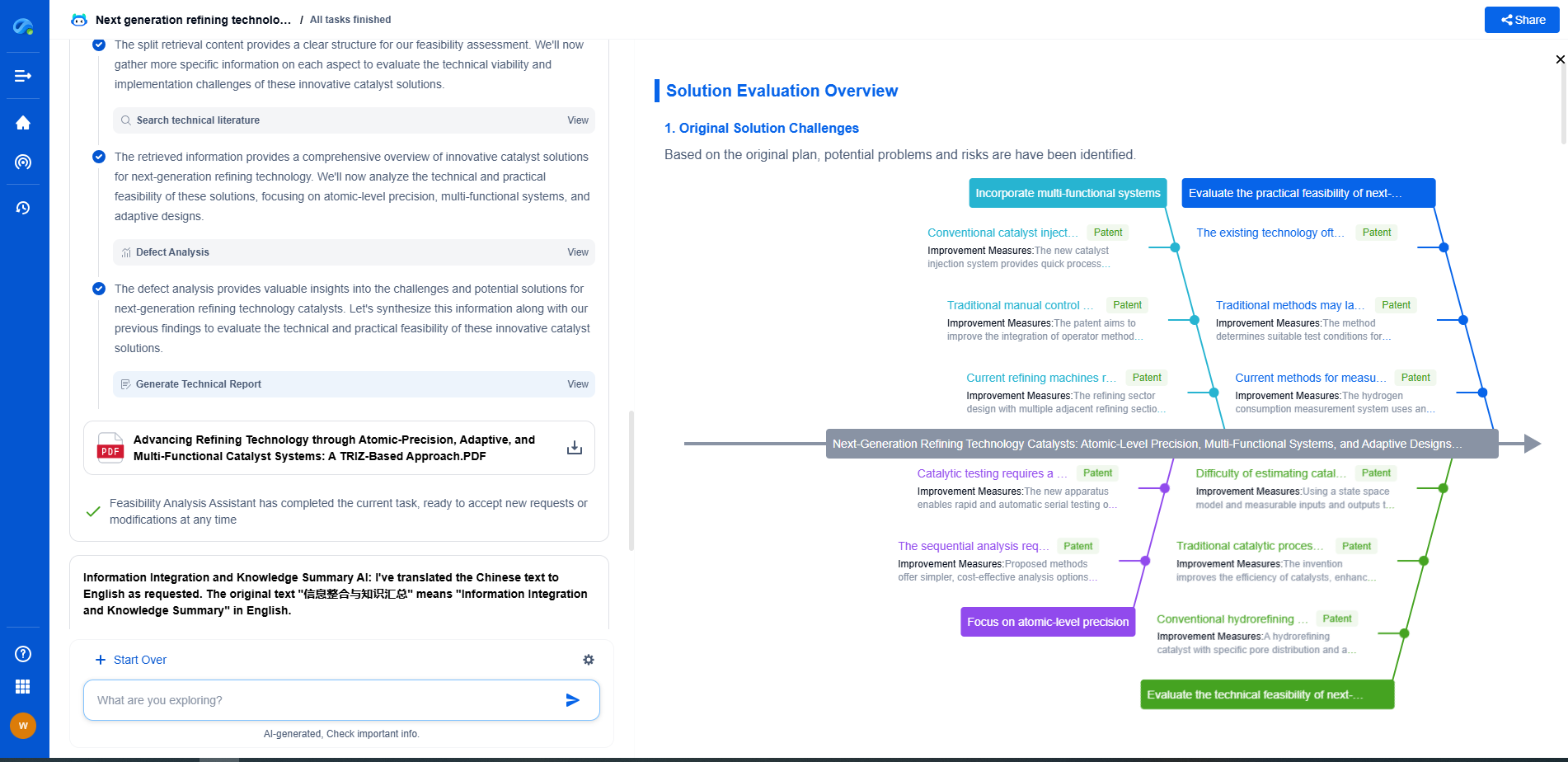How to Balance Hysteresis and Linearity in Sensor Selection
JUL 14, 2025 |
When selecting a sensor for a specific application, it is crucial to understand the different specifications that can affect its performance. Among these, hysteresis and linearity are two critical parameters that play a significant role in determining the sensor's accuracy and reliability. Hysteresis refers to the difference in the sensor's output when the measured quantity changes direction, while linearity indicates how well the sensor's output corresponds to the actual value across its operating range. Understanding these characteristics helps in making informed decisions that enhance the sensor's performance in its intended application.
Hysteresis in Sensors
Hysteresis can lead to inaccuracies, especially in applications where rapid changes in the measured quantity occur. This phenomenon is prevalent in mechanical sensors like pressure sensors, temperature sensors, and load cells, where the physical properties of materials can cause delayed response. Hysteresis is often caused by factors such as friction, magnetic effects, or structural deformation. When selecting a sensor, it is essential to review the specified hysteresis values to ensure that the sensor's performance will not be compromised in your specific application. Applications that require high precision, such as medical devices or aerospace systems, may demand sensors with minimal hysteresis to ensure that measurements are reliable and repeatable.
Linearity in Sensor Performance
Linearity is another critical factor to consider when selecting sensors. A sensor is considered linear if its output is directly proportional to the input quantity over its entire range. Non-linearity can introduce errors in measurement, which may require additional calibration or correction in software to achieve the desired accuracy. In applications where precise measurements are critical, such as scientific research or industrial automation, linearity becomes an important consideration.
Balancing Hysteresis and Linearity
Balancing hysteresis and linearity involves a trade-off, as materials and designs that minimize one of these factors may adversely affect the other. For example, a sensor with a very linear response may have higher hysteresis due to material properties, while a sensor with low hysteresis may exhibit non-linear behavior in certain ranges. The key to achieving an optimal balance lies in understanding the specific requirements of the application and prioritizing these characteristics accordingly.
When accuracy is paramount, as in laboratory or medical equipment, sensors with low hysteresis and high linearity should be prioritized, even if they come at a higher cost. Conversely, in applications where cost is a major concern and extreme precision is not necessary, such as consumer electronics, it may be feasible to compromise slightly on these factors.
Sensor Selection Strategies
1. Understand Application Requirements: Define the operational conditions and performance expectations, such as range, accuracy, and environmental factors. Identify whether hysteresis or linearity is more critical for the application.
2. Evaluate Sensor Specifications: Review and compare data sheets from different manufacturers. Pay attention to the specified hysteresis and linearity values, and assess how these specifications align with the application's needs.
3. Consider Material and Design: Some sensor technologies, such as piezoelectric or capacitive sensors, may inherently offer better performance in terms of hysteresis and linearity. Evaluate the materials and design principles used in the sensor's construction.
4. Prototype and Test: Whenever possible, prototype with multiple sensor options and test them under real-world conditions. This hands-on evaluation can help identify the best sensor that meets the application's requirements.
5. Consult Experts: Engaging with sensor manufacturers or consulting with industry experts can provide valuable insights into the latest technologies and best practices in sensor selection.
Final Thoughts
Balancing hysteresis and linearity is a nuanced process that requires a careful evaluation of the application's needs and the sensor's capabilities. By prioritizing the factors that matter most for the specific context and leveraging expert insights, engineers and designers can select sensors that provide reliable and accurate measurements, enabling successful performance in their intended applications. Through a thoughtful approach to sensor selection, it is possible to achieve the right balance that meets the demands of modern technological challenges.
From 5G NR to SDN and quantum-safe encryption, the digital communication landscape is evolving faster than ever. For R&D teams and IP professionals, tracking protocol shifts, understanding standards like 3GPP and IEEE 802, and monitoring the global patent race are now mission-critical.
Patsnap Eureka, our intelligent AI assistant built for R&D professionals in high-tech sectors, empowers you with real-time expert-level analysis, technology roadmap exploration, and strategic mapping of core patents—all within a seamless, user-friendly interface.
📡 Experience Patsnap Eureka today and unlock next-gen insights into digital communication infrastructure, before your competitors do.
- R&D
- Intellectual Property
- Life Sciences
- Materials
- Tech Scout
- Unparalleled Data Quality
- Higher Quality Content
- 60% Fewer Hallucinations
Browse by: Latest US Patents, China's latest patents, Technical Efficacy Thesaurus, Application Domain, Technology Topic, Popular Technical Reports.
© 2025 PatSnap. All rights reserved.Legal|Privacy policy|Modern Slavery Act Transparency Statement|Sitemap|About US| Contact US: help@patsnap.com

